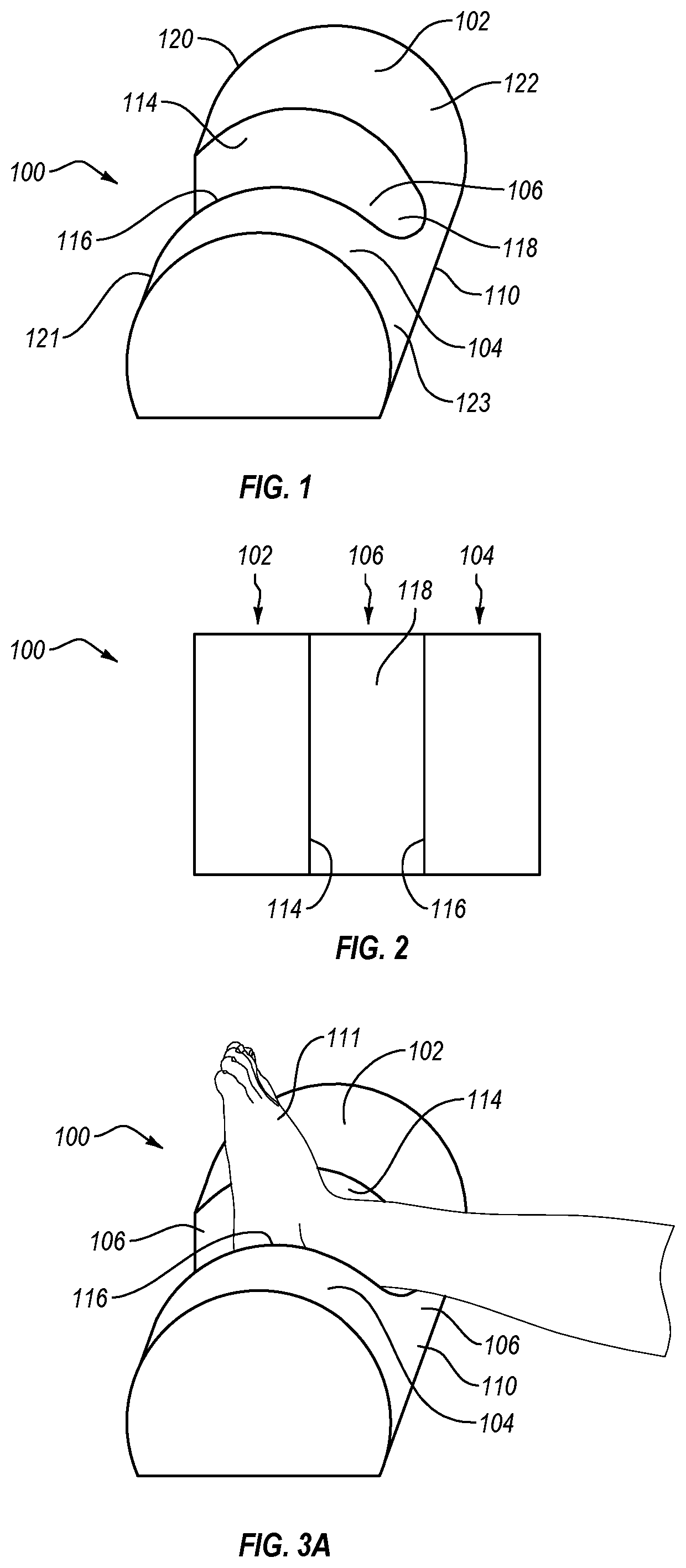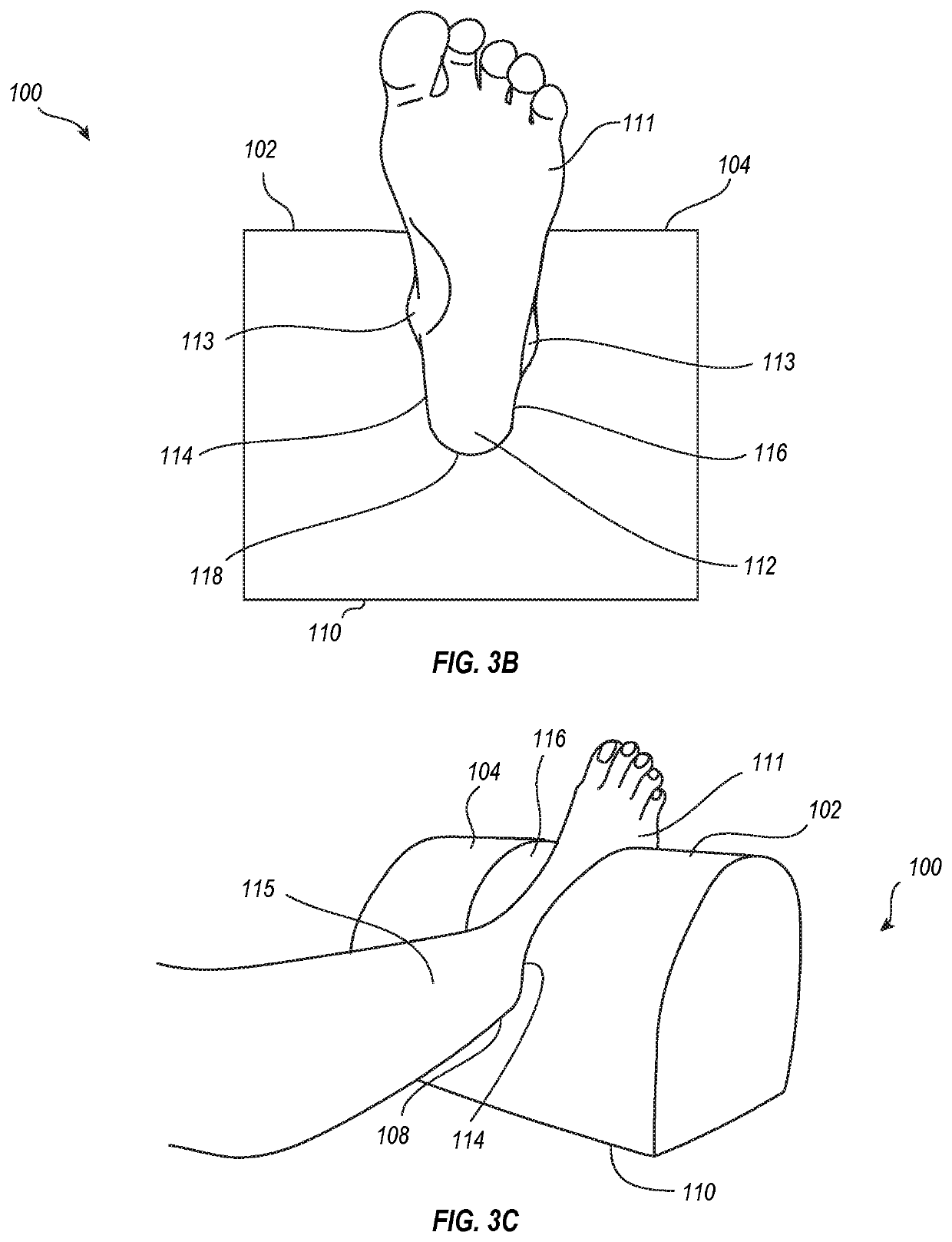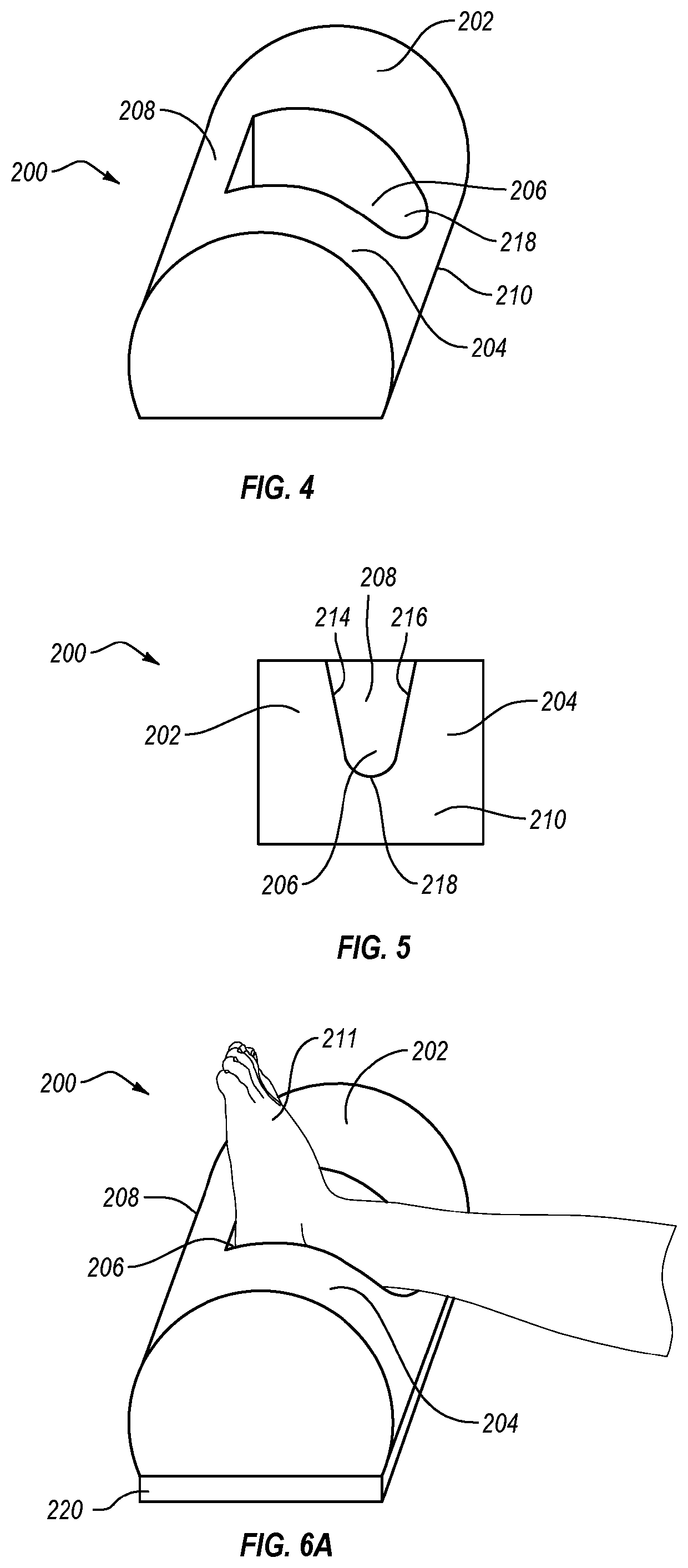Orthopedic device and method for lower limb elevation and stabilization
a technology of orthopedic devices and stabilizers, which is applied in the direction of restraining devices, applications, transportation and packaging, etc., can solve the problems of unwanted and potentially dangerous torsion or torque to the knee joint of the patient recovering from knee surgery, the patient may incur serious pain, and the knee may be reinjured, so as to maintain the extension of the knee joint and unwanted torsion, and promote proper healing
- Summary
- Abstract
- Description
- Claims
- Application Information
AI Technical Summary
Benefits of technology
Problems solved by technology
Method used
Image
Examples
Embodiment Construction
[0024]Disclosed herein are orthopedic devices configured for supporting and restraining rotation of the foot of a patient who is recovering from surgery, such as knee surgery. The devices help maintain knee extension and unwanted torsion on the knee joint by restraining foot rotation. Continuous extension and of a surgically repaired knee and protection against unwanted torsion of the knee following surgery promote proper healing. Some embodiments are designed to also limit plantar flexion of the foot.
[0025]For lower limb medical recovery, such as following knee surgery or injury, a patient often lies or is placed in a supine position, i.e. with the front (anterior) portion of the lower limb facing up and the back portion of the lower limb (posterior) facing down. As part of the recovery, it is often required for the lower limb to remain in a certain or fixed position, being isolated and elevated, for a period of time. Also, elevating the lower leg from the bed surface may be desira...
PUM
 Login to View More
Login to View More Abstract
Description
Claims
Application Information
 Login to View More
Login to View More - R&D
- Intellectual Property
- Life Sciences
- Materials
- Tech Scout
- Unparalleled Data Quality
- Higher Quality Content
- 60% Fewer Hallucinations
Browse by: Latest US Patents, China's latest patents, Technical Efficacy Thesaurus, Application Domain, Technology Topic, Popular Technical Reports.
© 2025 PatSnap. All rights reserved.Legal|Privacy policy|Modern Slavery Act Transparency Statement|Sitemap|About US| Contact US: help@patsnap.com



